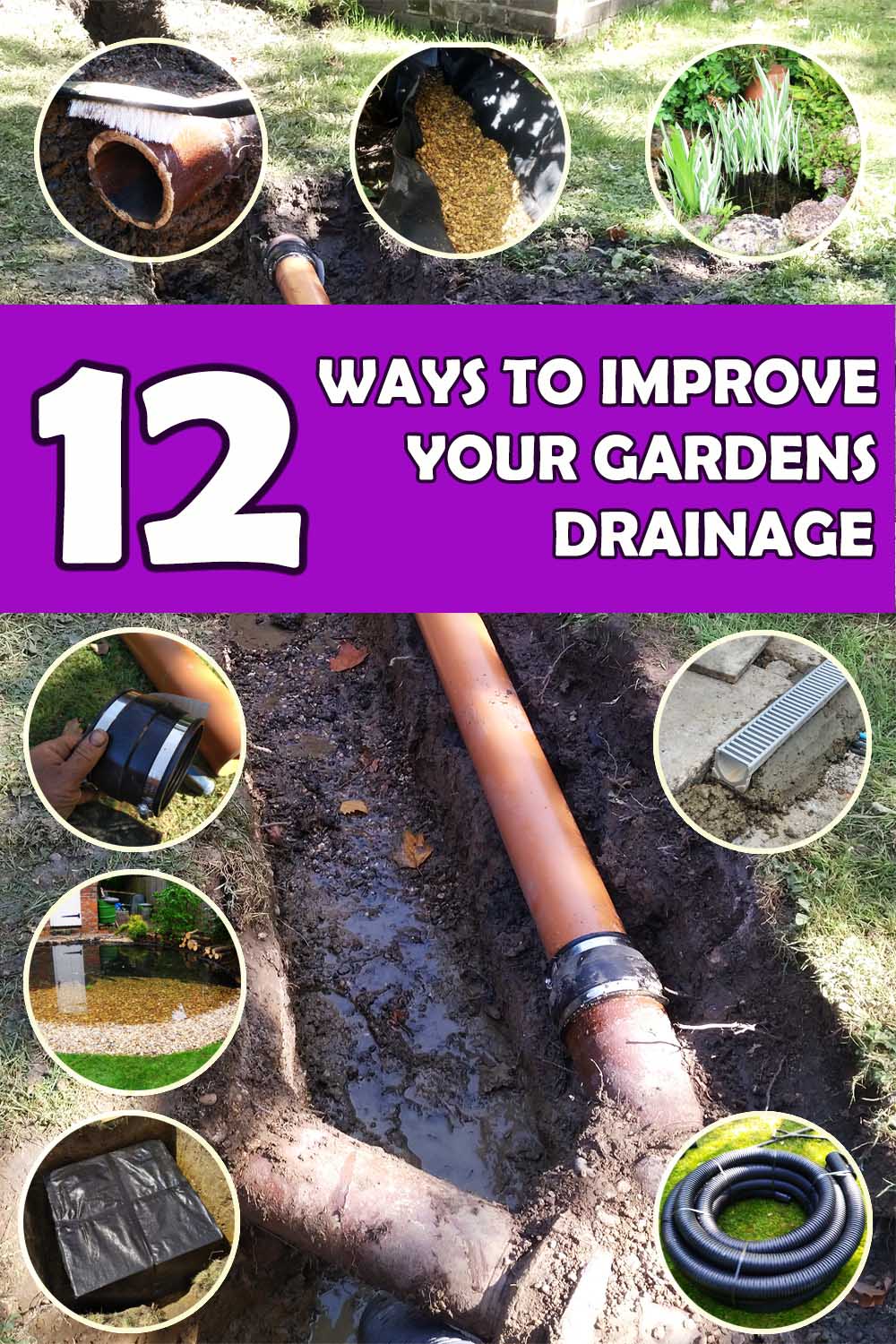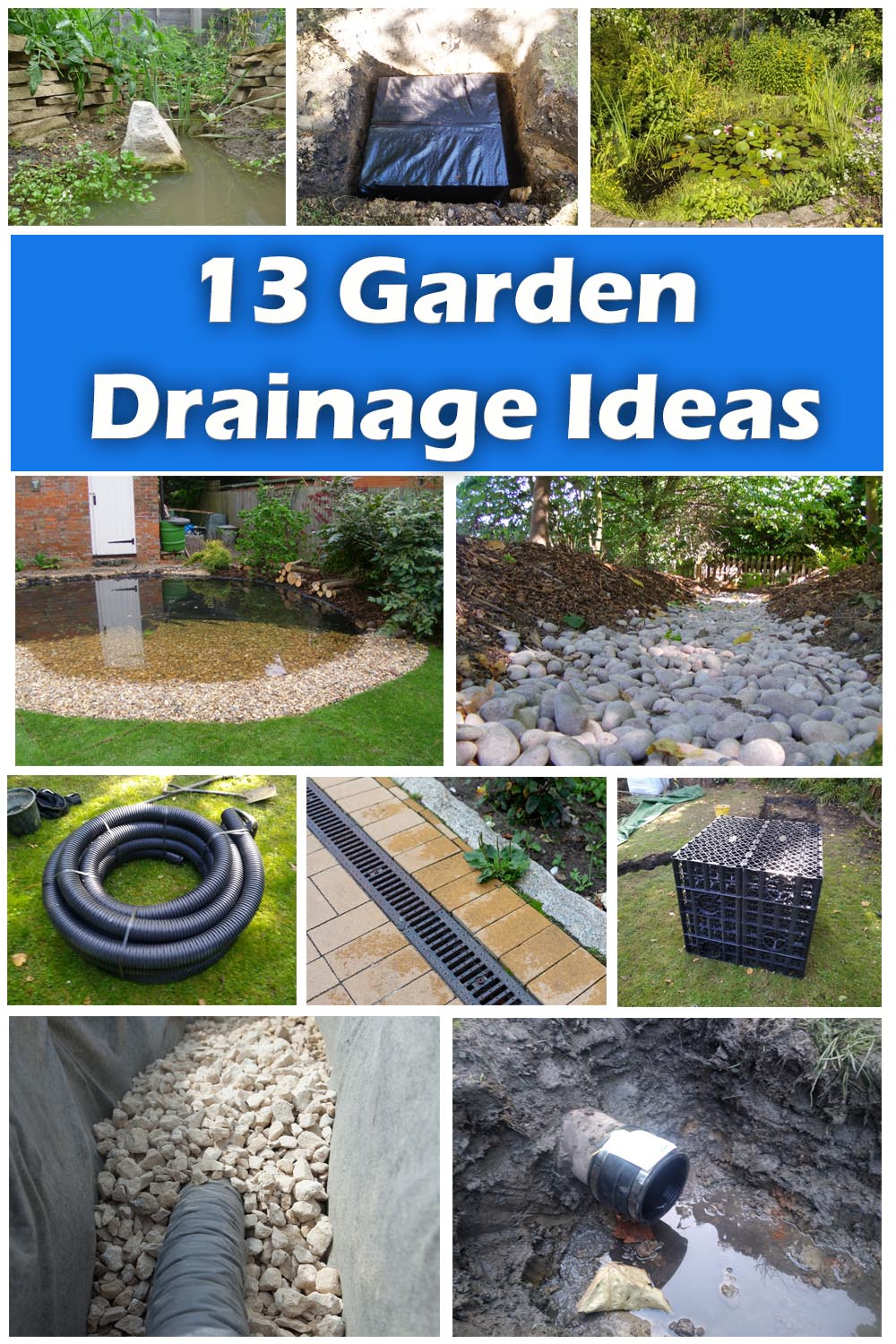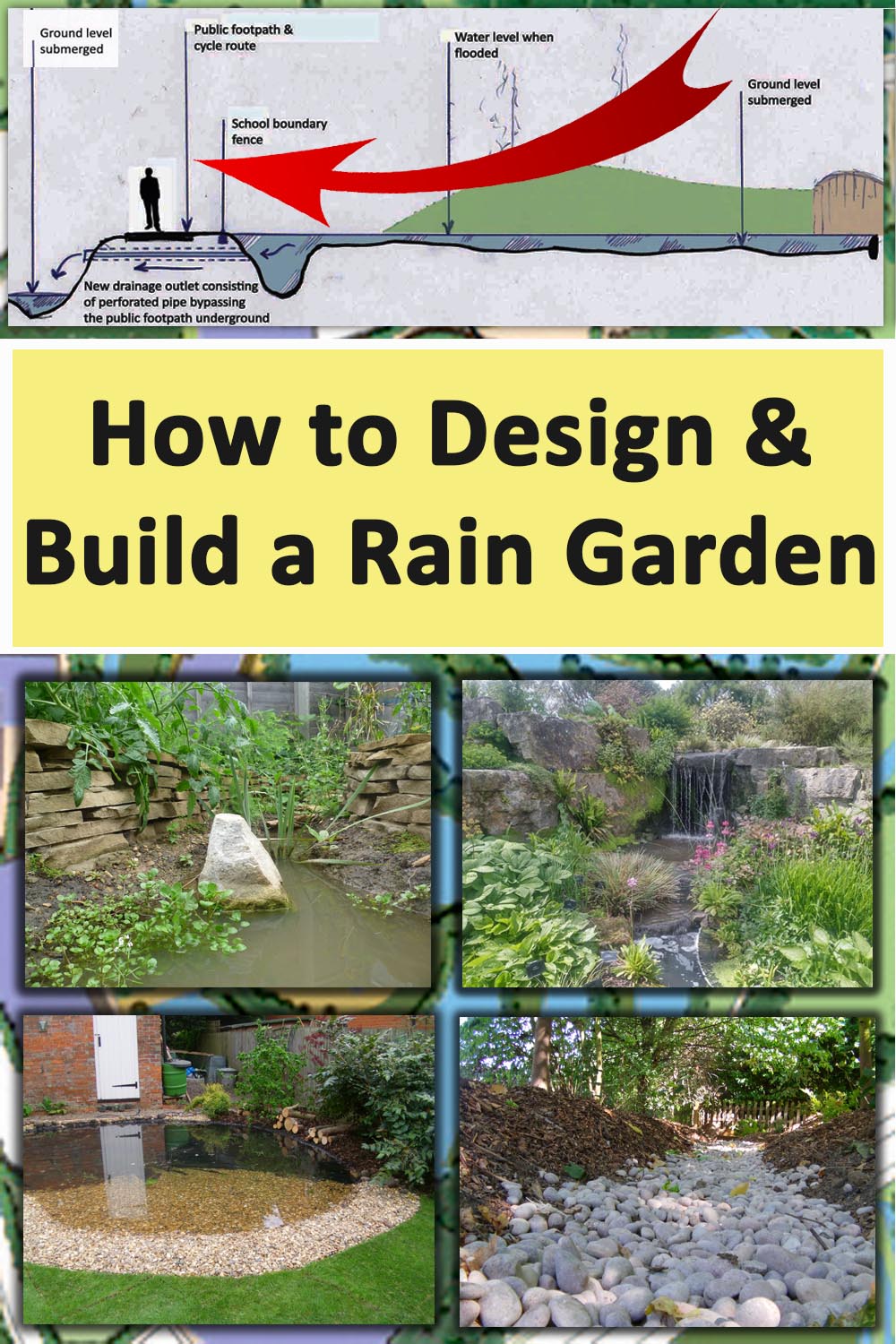|
This article contains affiliate links
Sustainability has never been such an important element of how we live our lives and interact with the environment.
When many contemplate drainage they think of engineered concrete channels and underground pipes. In nature however, hydrology is an intricate part of how the landscape functions. Surface water hydrates soil which slowly releases into streams, rivers and water basins. This natural process is of vital importance to habitats, ecosystems and soil health. These elements are also extremely important for our own health. Water in our gardens is no different from the water within the wider landscape.
Collectively urban areas and gardens make up a vast area of catchment where surface water flows from.
These areas are also where the most polluted and accelerated surface water leaches from. Consequently urban drainage and sustainable drainage for gardens is of upmost ecological importance. In this article I will explain the importance sustainable garden drainage and how it can be implemented. What is sustainable drainage?
Sustainable drainage is the mitigation of accelerated and polluted surface water flows from manmade environments.
Sustainable drainage aims to slow down storm water from hard surfaces to prevent flash flooding and water pollution. It is also the containment of urban runoff via naturalistic landscaped wetlands to prevent the pollution of watercourses. Although the aim of sustainable drainage is simple, there are numerous installations and methods for its implementation. These come in many forms and will be summarised and described below. Hazards of incorrect landscape drainage
For many years surface water from gardens and paved surfaces were channelled into drainage networks. During times of heavy rain these networks would become overwhelmed and breach into natural watercourses. As urban development increased so did vast areas of impermeable surfacing which accelerated surface run-off.
This led to extensive flash flooding causing damage to homes and other property. Furthermore, fast flowing water from our urban surfaces carried a number of undesirable substances.
Animal faeces, heavy metals, oils, salts, fertilisers, and chemical spills all found their way into fresh water habitats. This led to the destruction of wildlife habitats and the toxification of the hydraulic cycle. The pollution of fresh water systems we rely upon for our own survival is deeply concerning. In some cases certain pollutants can stay within the hydraulic cycle for many years. This raises grave concerns for the future health of all living organisms including humans and the planet.
Consequently the sustainable urban drainage of our local landscapes and gardens is of uppermost importance! Sustainable landscape and garden drainage is not always granted the attention that it deserved.
Below are some sustainable garden drainage installations which can help mitigate these problems. Green roofs
Greening roofs is not a new idea however many developers have been slow to implement them. This is probably due to the extra cost of installation and ongoing maintenance. However, it has been shown that green roofs can extend the life of a roofs water proofing many times over. Such systems can also improve the insulation of a roof against heat loss, saving on energy costs.
Many green roof systems are simply shallow build up systems laid with sedum mats. These can slowly absorb heavy rain and discharge it slowly dramatically reducing the risk of flash flooding.
Green roofs can also be installed around gardens on Garages, sheds, log stores and bike sheds. Permeable paving
Permeable paving is paving and surfacing that lets water pass through its surface. Such surfaces are extremely good at preventing surface water pollution and flash flooding. There are now a broad range of permeable paving and surfacing products on the market. Some of these include; permeable block paving, open textured asphalt, resin bound surfacing and gravelled grid systems. It is important to remember these surfaces will require permeable sub-bases like Mot type 3 to be effective. Rain gardens
Rain gardens are gardens specifically designed and landscaped to accept and channel urban run-off. This typically involves channelling rainwater from roof gutters and patios into beautifully landscaped wetlands. Rain gardens typically make a feature of flowing water as it slowly absorbs into the garden. Typical rain garden examples include pebbles, gravels, boulders and bridges. Why not visit our article on how to make a rain garden here. Rainwater harvesting
Rain water harvesting is the collection and storage of rainwater from impermeable roofs and paving. The most common example of rainwater harvesting is water butts plumbed into roof gutters. However, there are many other ways of implementing such storage techniques. One of which is storing rainwater in large underground tanks with in-built pumps. During hot summers this water can be tapped into for landscape irrigation. The collection and storage of urban surface water in this way aligns perfectly with sustainable drainage principles. Soakaways
Soakaways have always been utilised to allow surface water to drain back into the landscape. Traditionally soak-aways were simply large cubic metre excavations filled with builder’s rubble. During times of heavy rain these would fill with water slowly being slowly reabsorbed over time. However, today, soak-aways are typically installed using a much more efficient crate system.
These consist of a series of reinforced plastic crates clipped together. When connected, they form a robust void under the ground where water can drain away freely.
For more information on how to install a garden drainage soak-away visit our article here. Retention ponds
Retention ponds have a similar function to soak-aways but in a more naturalistic sense. Retention ponds are designed to store water as more of a naturalised wildlife pond. This allows retention ponds to store water for later use whilst providing valuable habitat for wildlife. Retention ponds can also be designed to allow excess surface water to absorb back into the landscape.
This can be achieved by creating a wildlife pond within a low spot inside the landscape. As the pond fills up past the liner the landscape retains a higher water level until the water reabsorbs into the ground.
Bioswales
Bioswales are linear depressions within the landscape that channel water through biological cleaning systems. Water is cleaned by flowing it through the roots of wetland plants. A bioswale may simply look like a long ditch however there is much that goes into bioswale design. Bioswales must be designed to accept the correct volume of water for their associated catchment area.
They must also be planted with the correct wetland plants for their region. Many bioswales will also consist of other hard and soft landscaping helping them to integrate into the surrounding landscape.
They may also have raised overflows which fill retention vessels in times of very heavy rainfall. Seasonally flooding wetlands
Seasonally flooding wetlands are specific landscape types and habitats vital for specialised species of wildlife. These wetlands are typically dry during summer and flooded during the winter. Seasonally flooding wetlands are a great way to create sustainable landscape drainage systems. These can be realised by excavating a series of interlinked dry ponds. Roof guttering and drainage systems can then be plumbed into these naturalistic wetlands systems. During winter and times of heavy rainfall these wetlands can slowly fill accepting excess, surface run-off.
Thank you for reading our article about sustainable landscape drainage for gardens. If you require sustainable drainage services do not hesitate to contact us.
We provide a whole range of sustainable and garden drainage services tailored to fit your specific site. Based in Amersham, our landscaping services include drainage, paving, fencing, ponds, pathways and garden makeovers. We service most of Buckinghamshire including neighbouring counties; We have also just opened a new office in Norfolk.
'As an Amazon Associate I earn from qualifying purchases'
0 Comments
Leave a Reply. |
The Author
|
Landscaping services across Buckinghamshire, Amersham, Aylesbury & High Wycombe
Hyde Heath, Amersham, Buckinghamshire |
|

















